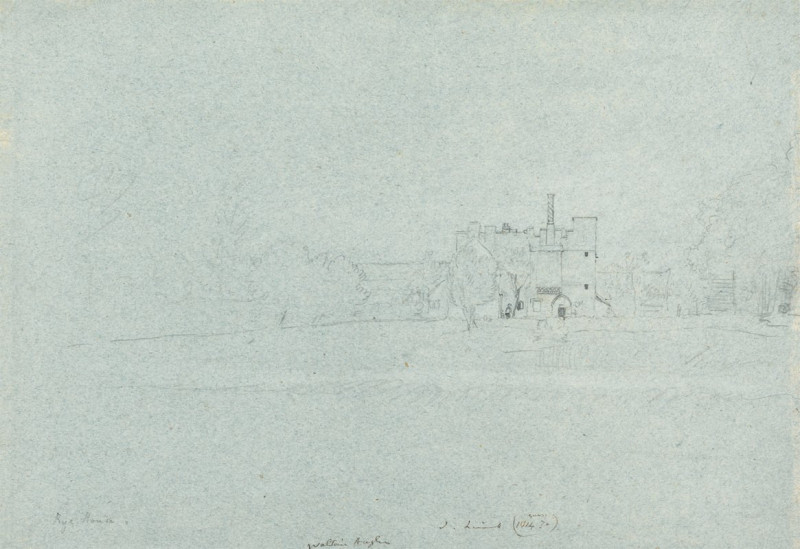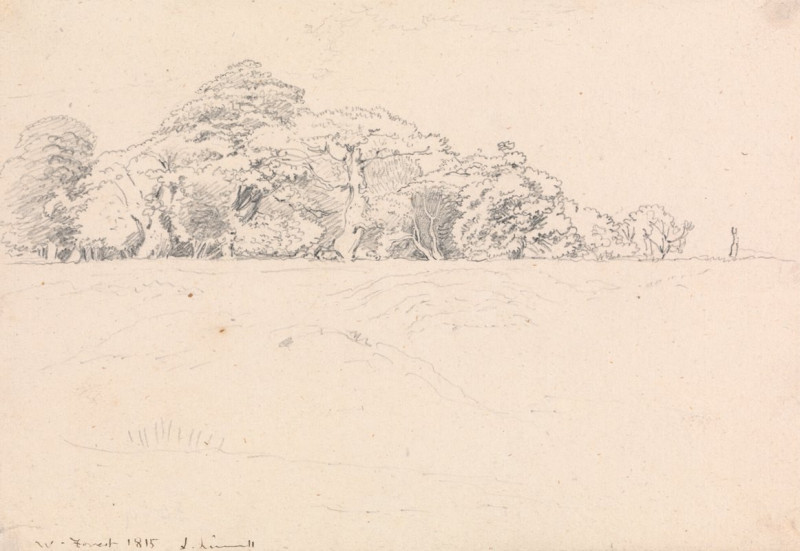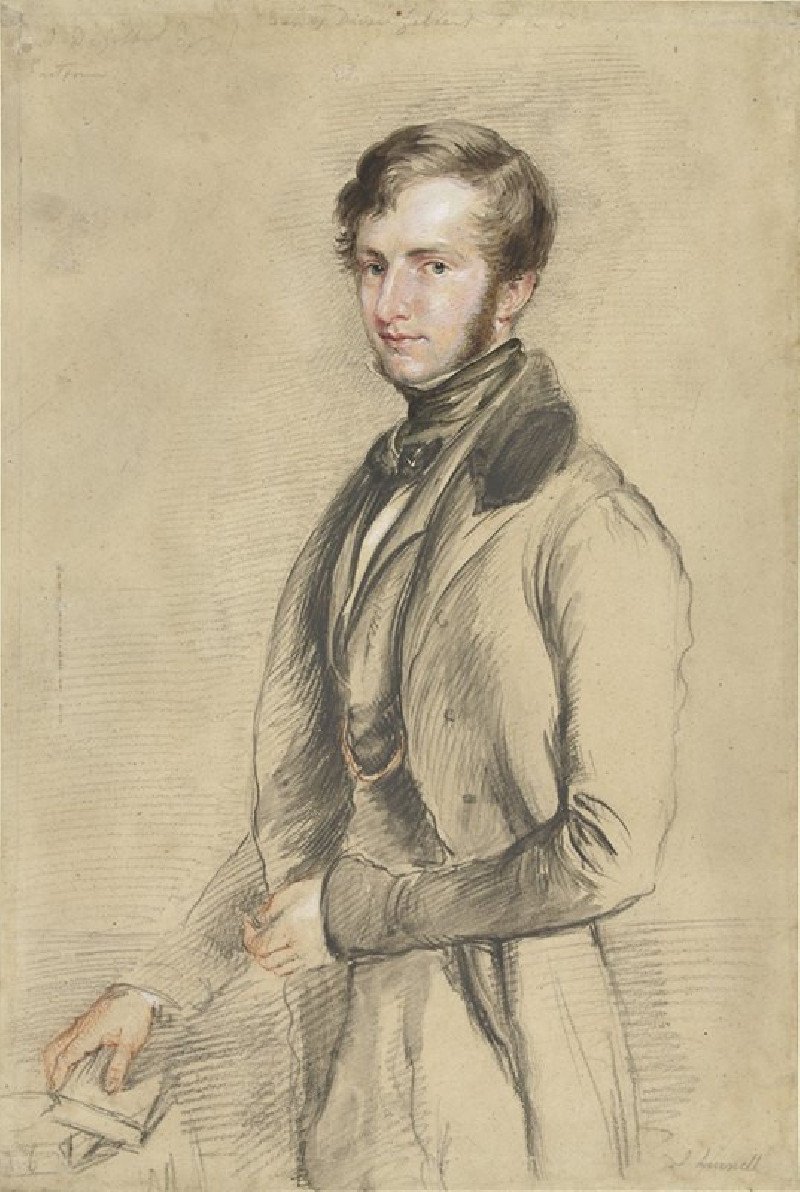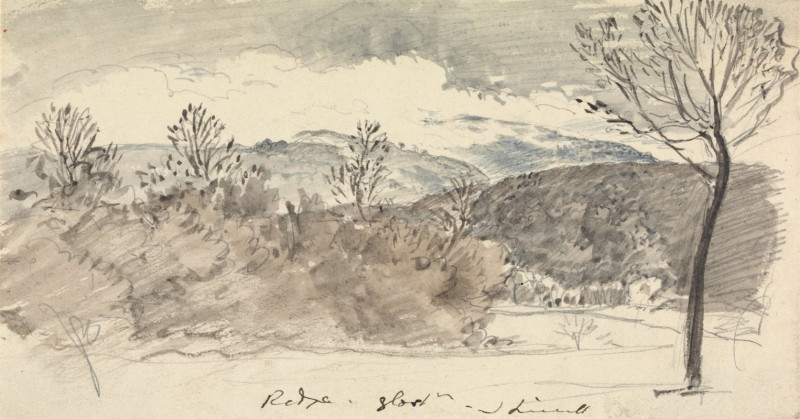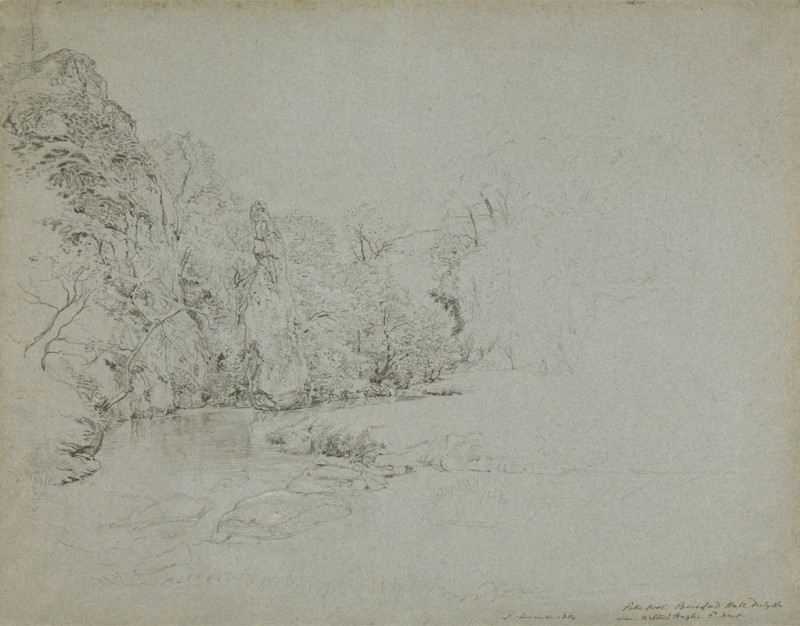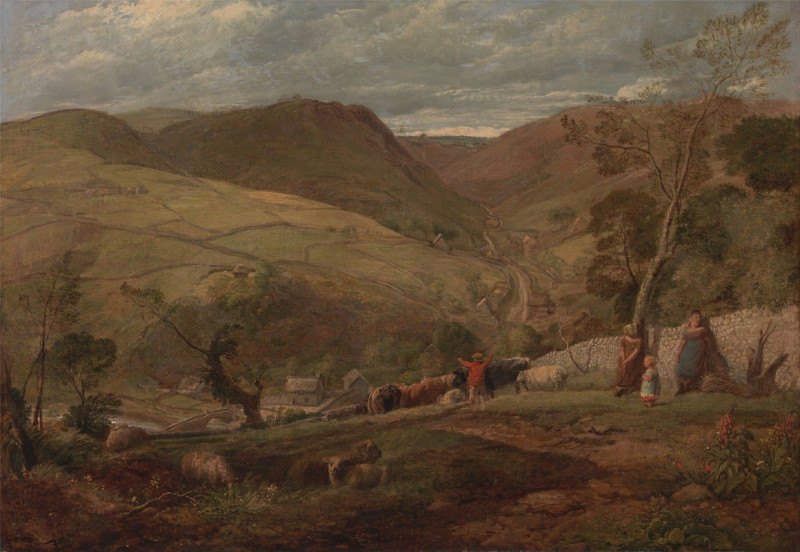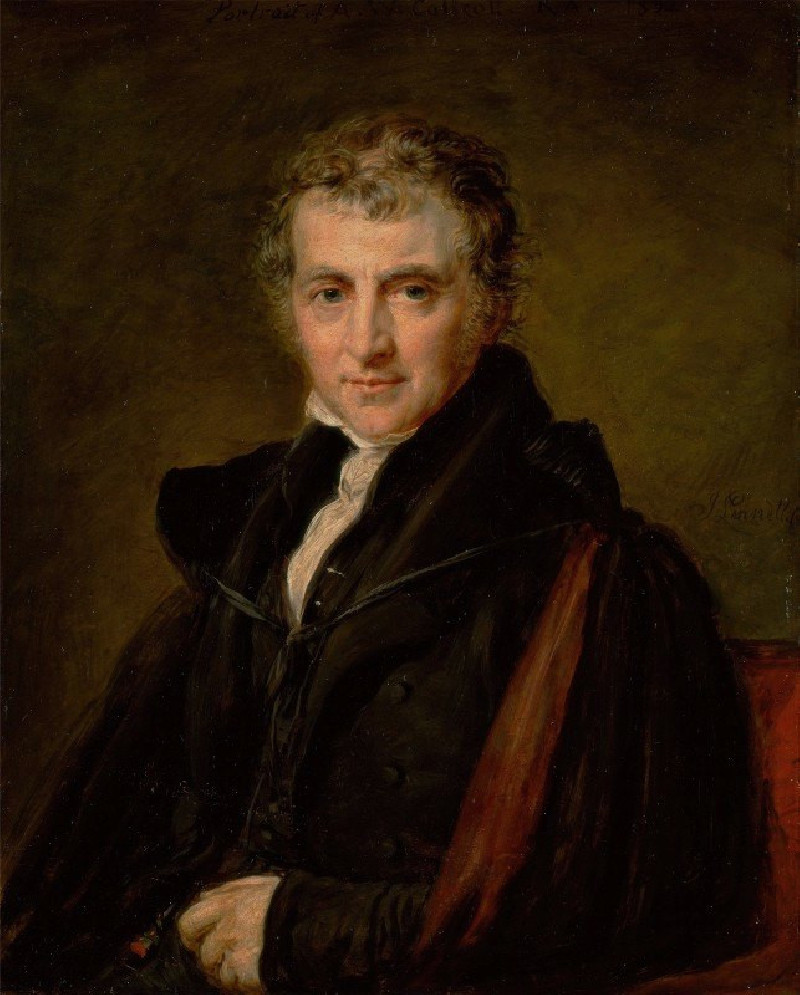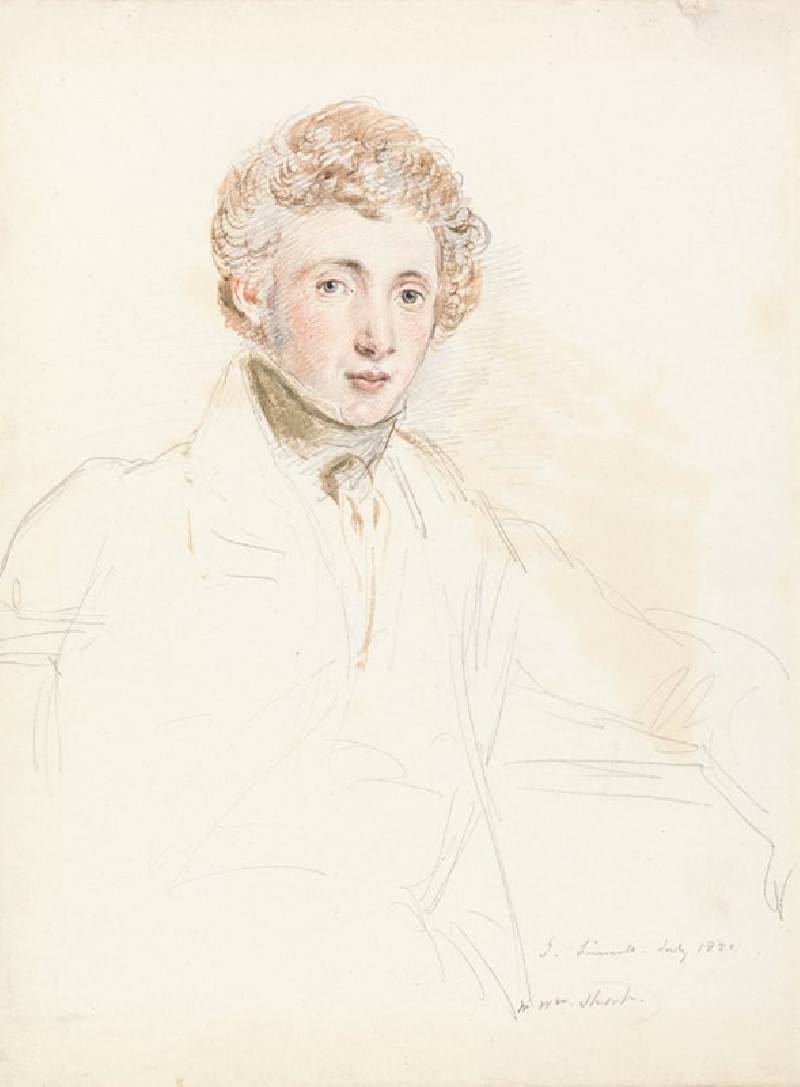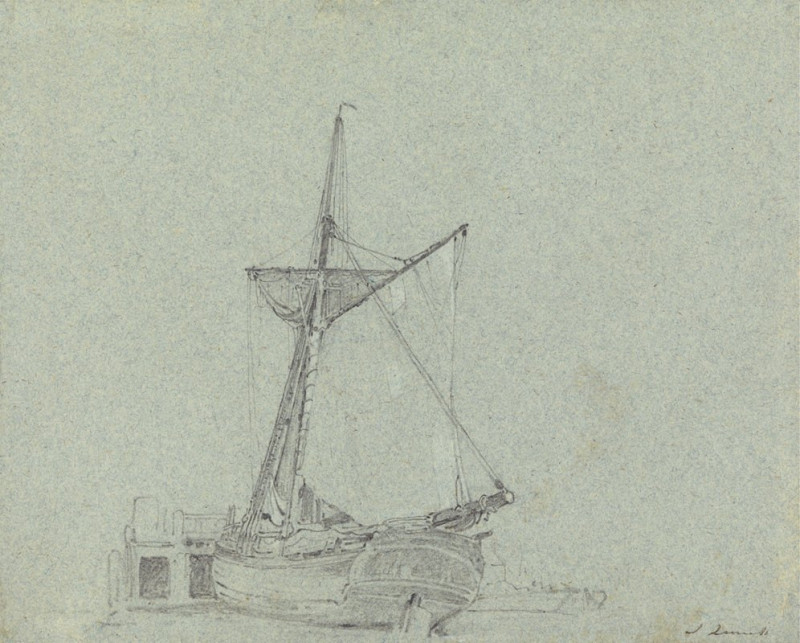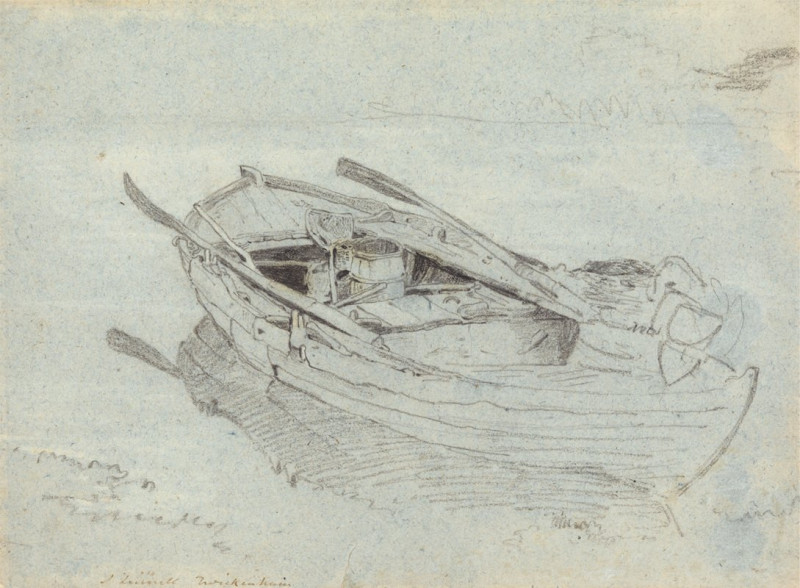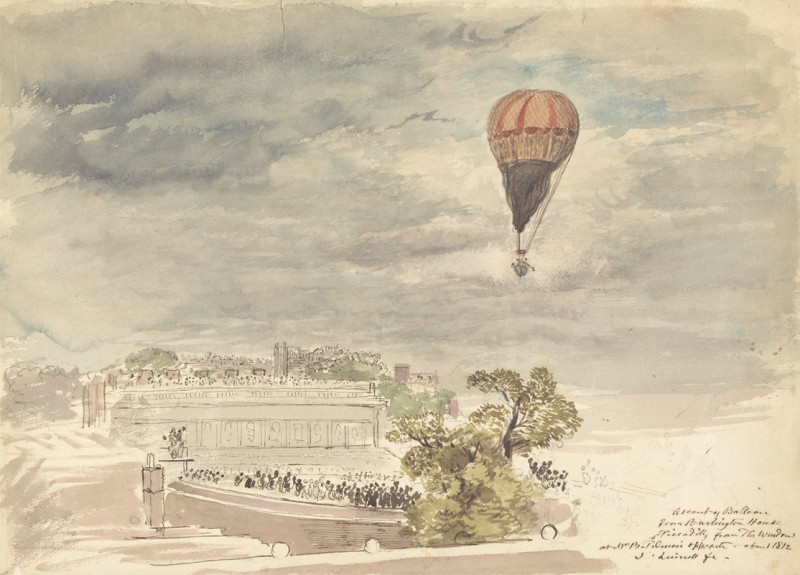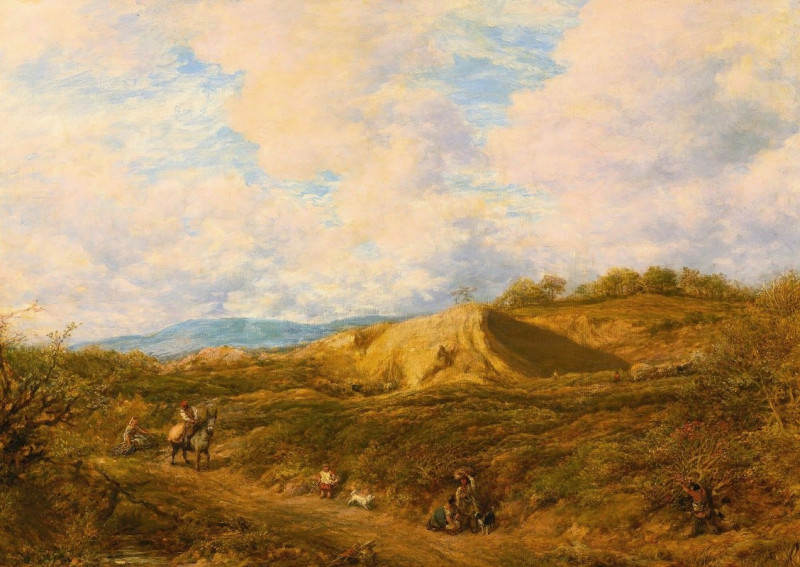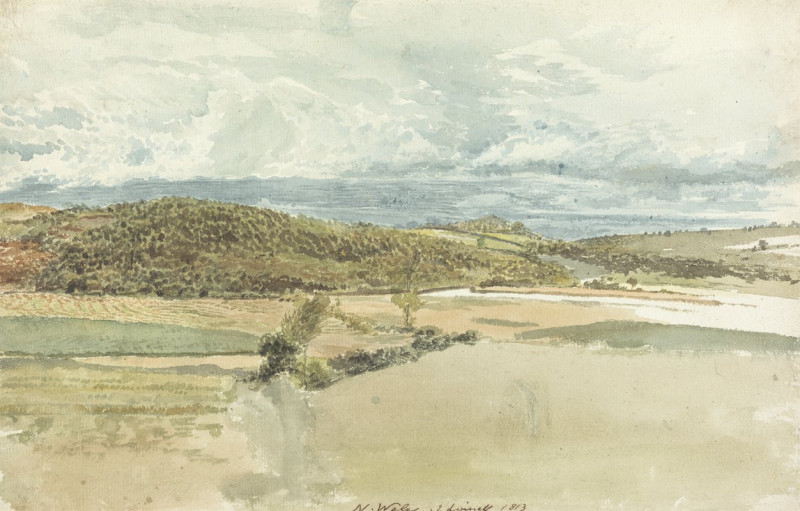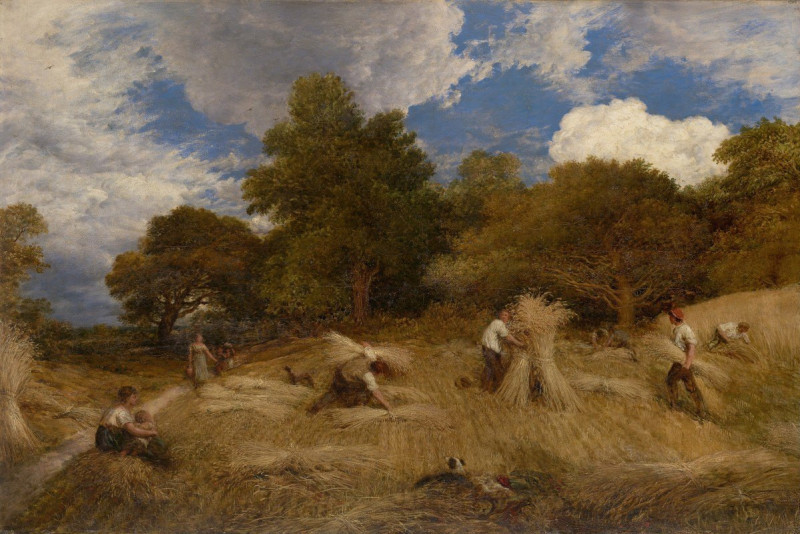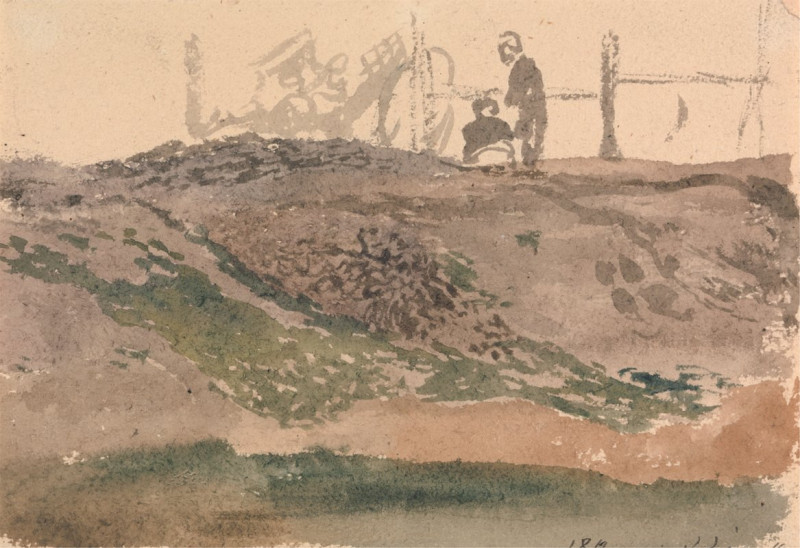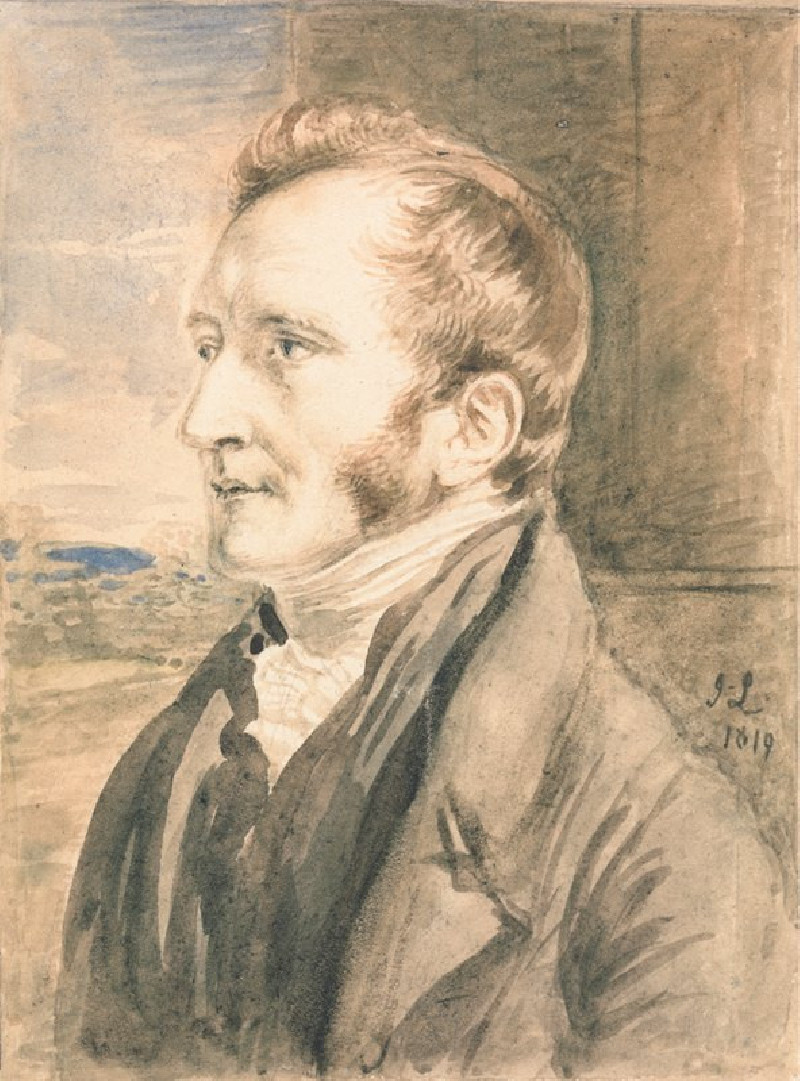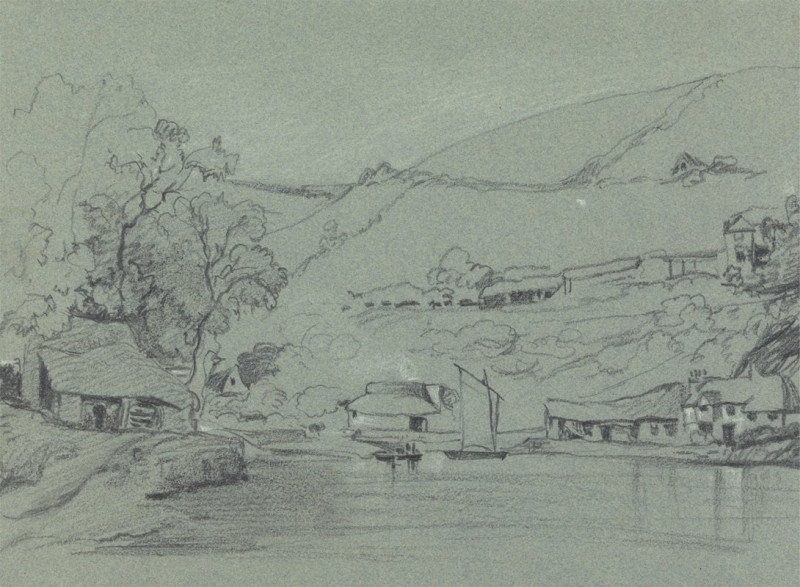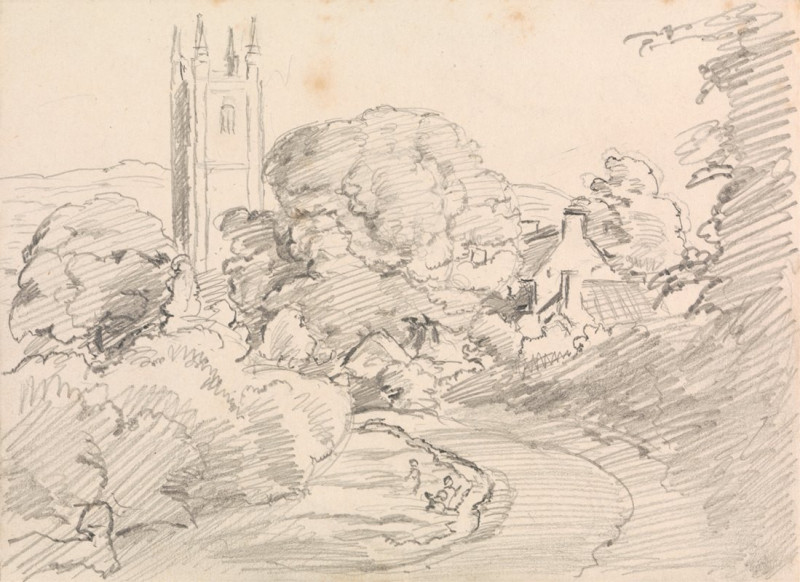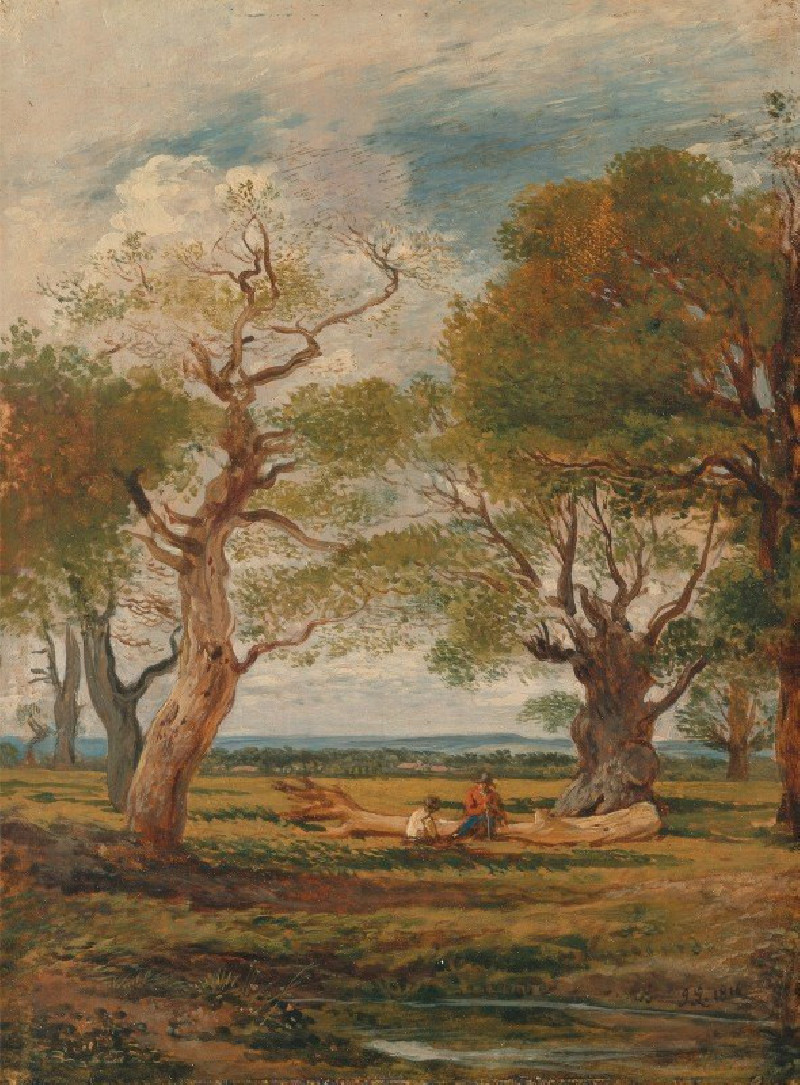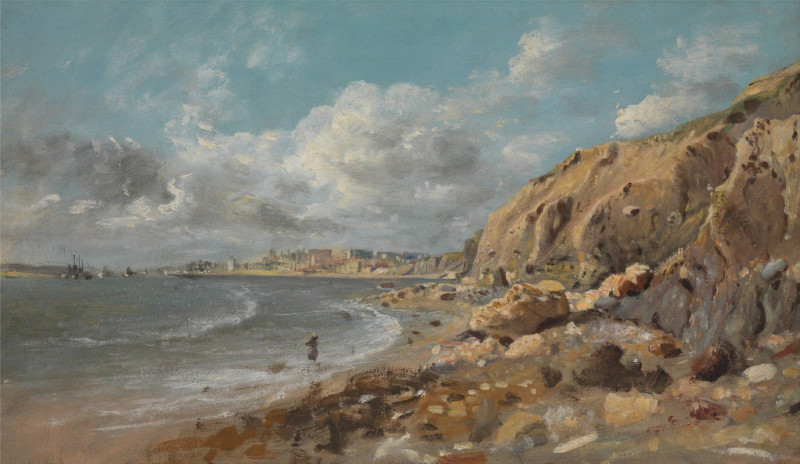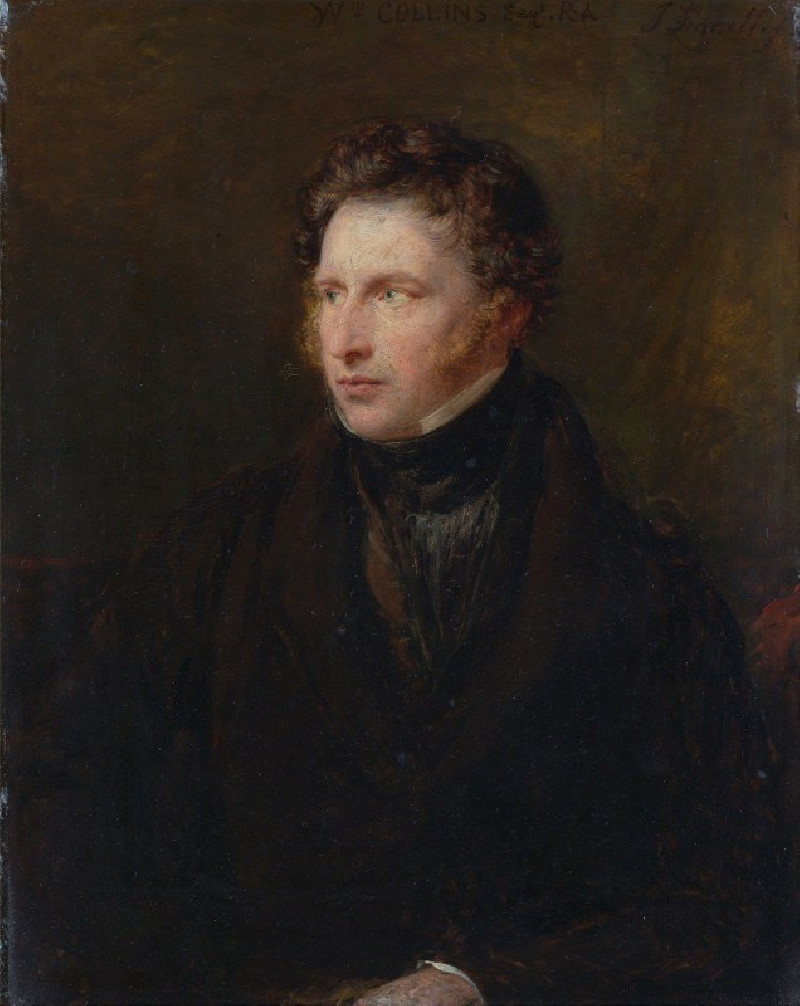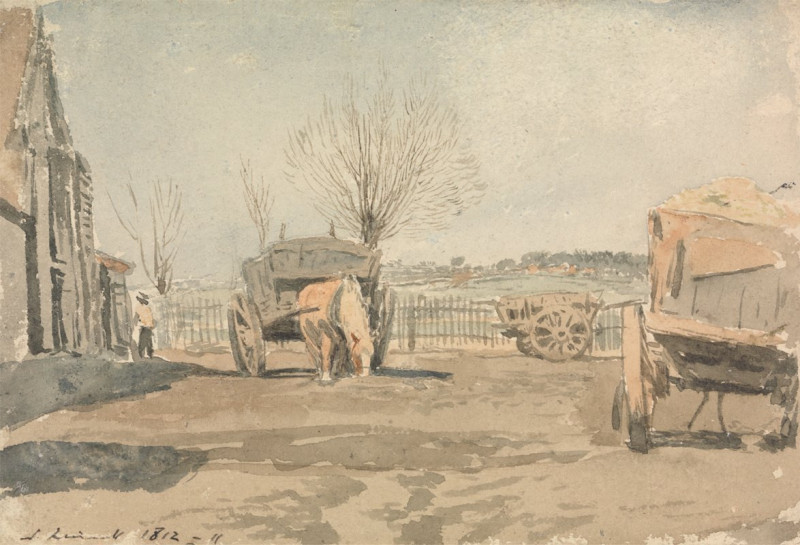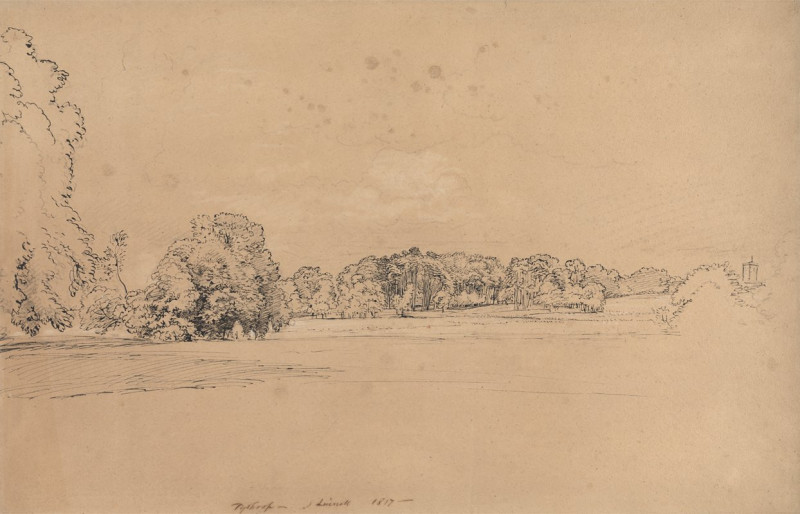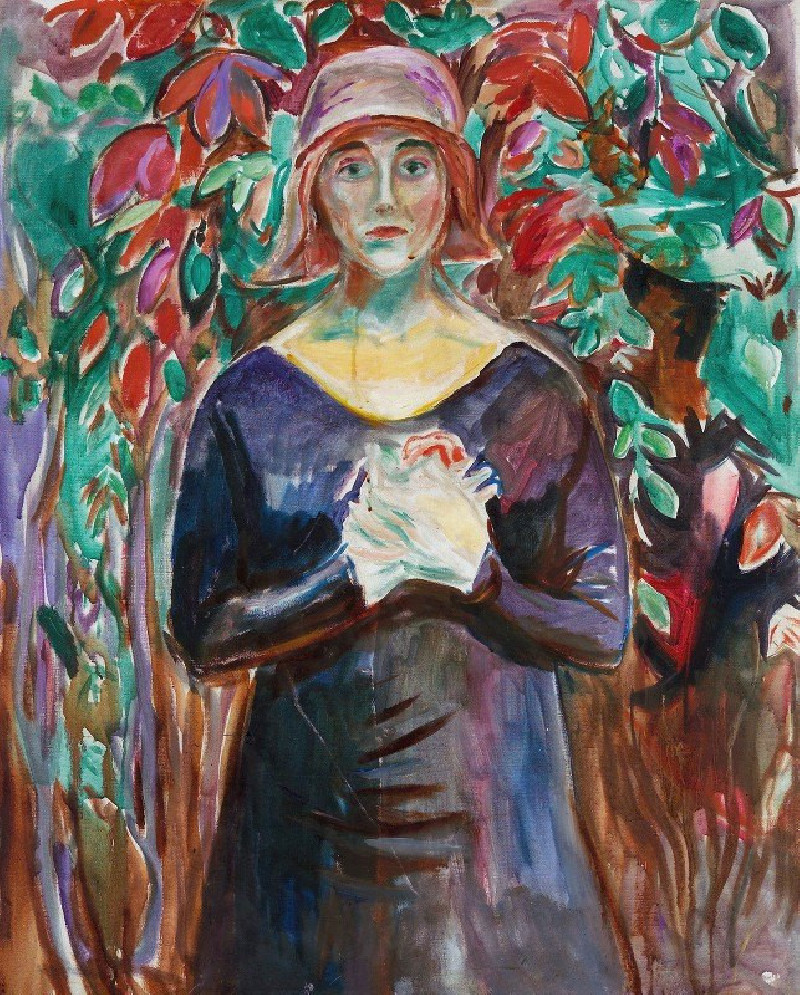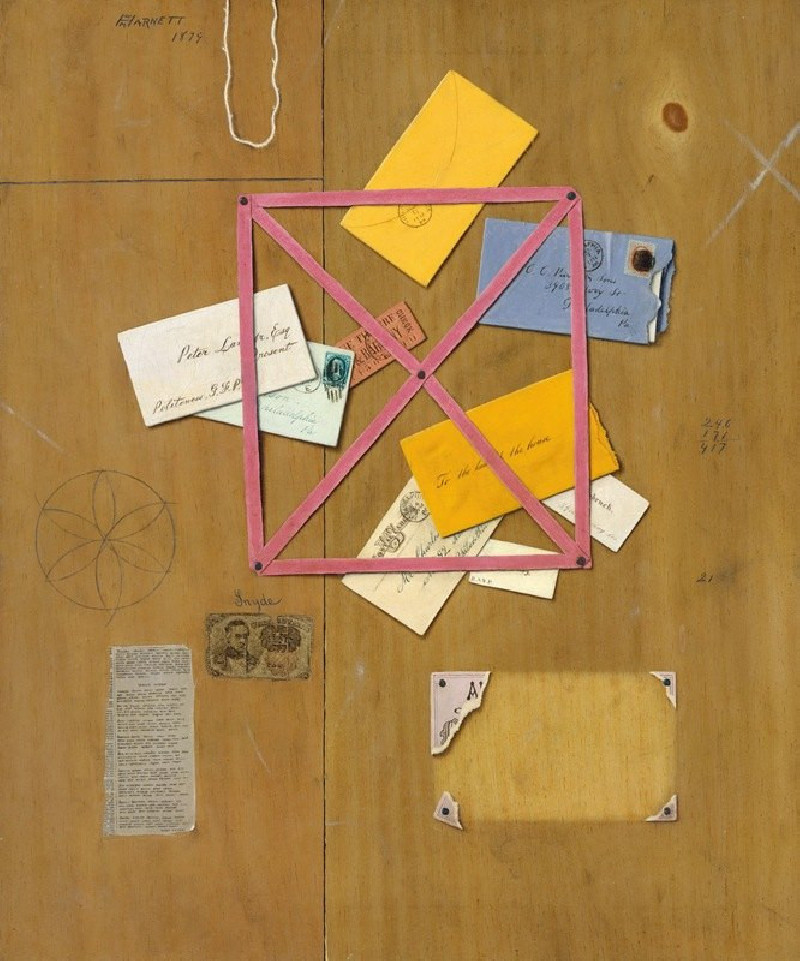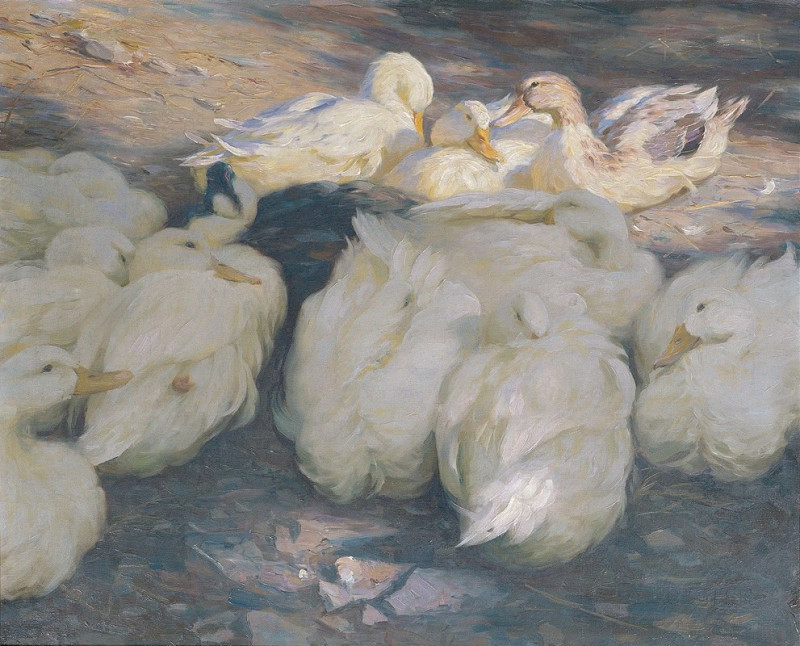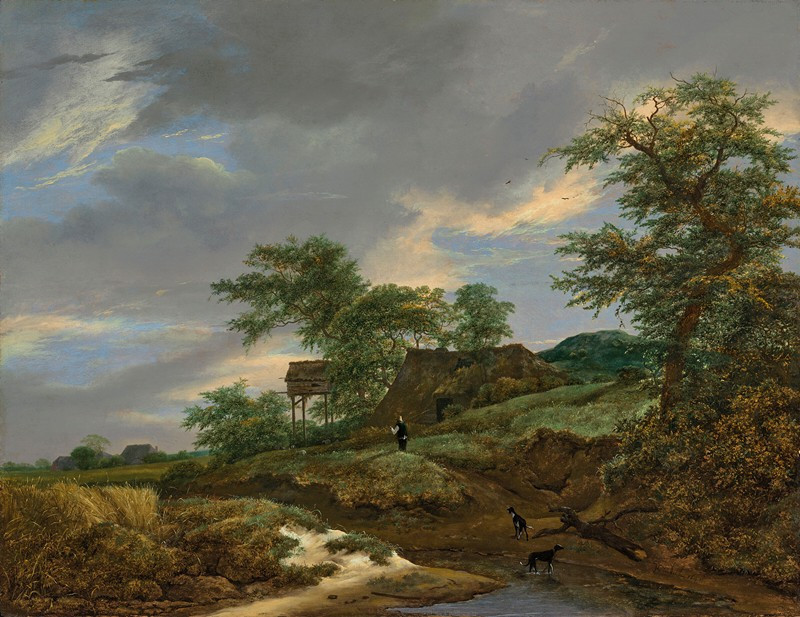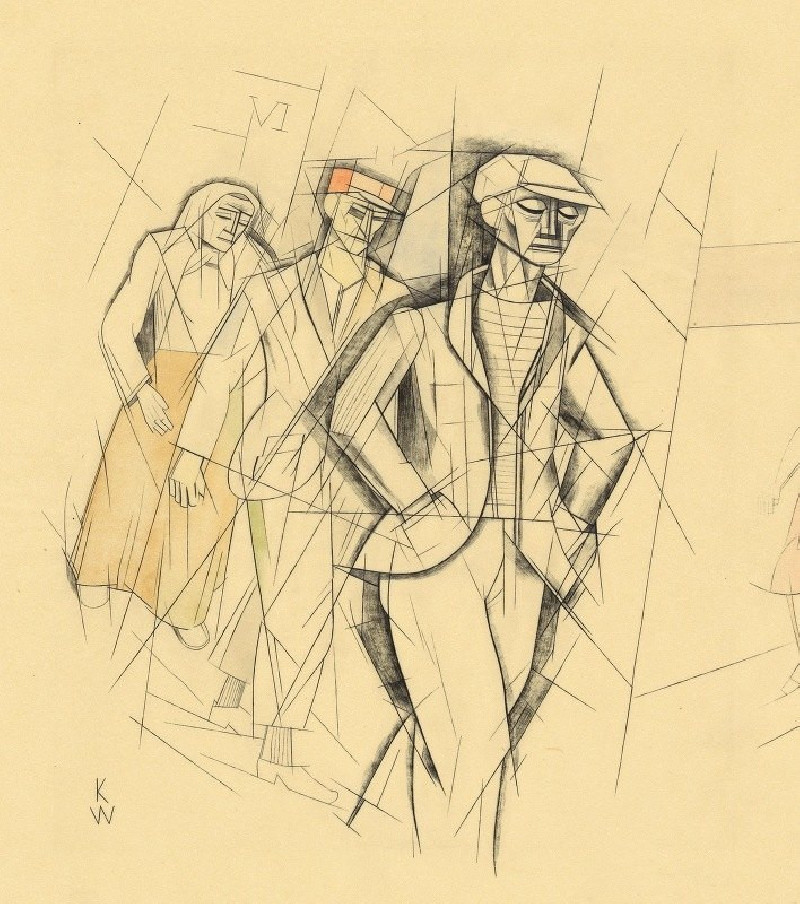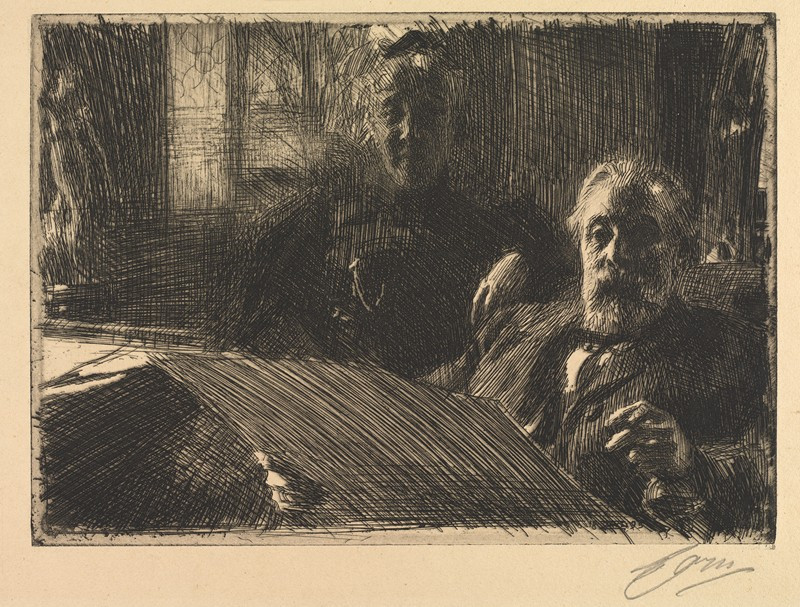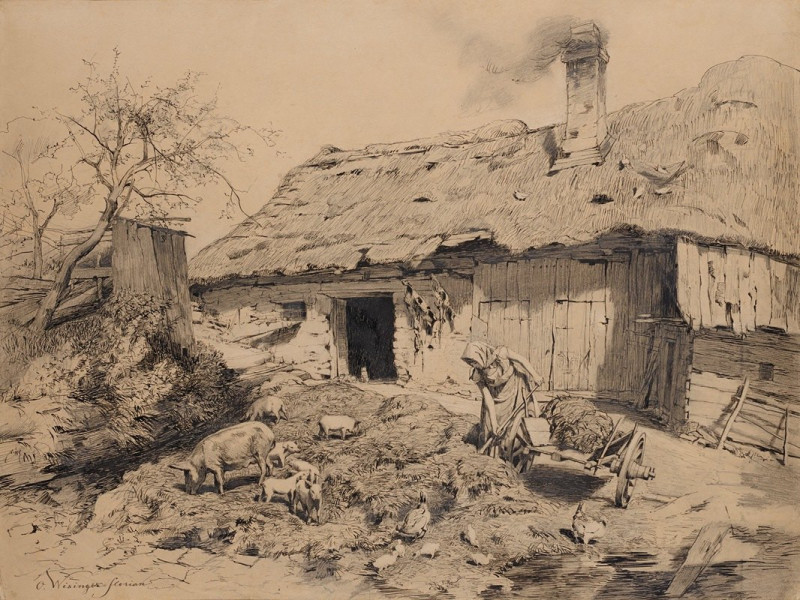Rye House (1814)
Technique: Giclée quality print
Recommended by our customers
More about this artwork
"Rye House," a delicate sketch by the esteemed British artist John Linnell, crafted in 1814, offers a captivating glimpse into the tranquil rural life of early 19th century England. This artwork depicts the historical Rye House, located in Hertfordshire, known for its connections to the Rye House Plot of 1683. Linnell's use of fine lines and minimalistic detail captures the essence of the architecture and surrounding landscape.In the sketch, Rye House is portrayed as a sturdy, multi-story building that dominates the composition. Its detailed chimneys that rise confidently against the skyline reflect the era's architectural style. Surrounding the building are various elements that evoke a sense of rural serenity: scattered trees, a faint outline of a fence, and gentle indications of the flat, expansive landscape typical of the region. The foreground of the drawing, though lightly detailed, suggests an open field or road, inviting the viewer's eye to travel towards the historical structure.John Linnell, primarily known for his landscapes and portraits, brings a touch of his signature attention to nature through the subtle rendering of trees and textures in the environment. This early work of his is a fine example of how sketches serve not only as stand-alone pieces but also as insightful studies for larger, more detailed projects.
Delivery
Returns
John Linnell was an English engraver, and portrait and landscape painter. He was a naturalist and a rival to the artist John Constable. He had a taste for Northern European art of the Renaissance, particularly Albrecht Dürer. He also associated with Edward Thomas Daniell, and with William Blake, to whom he introduced the painter and writer Samuel Palmer and others.

